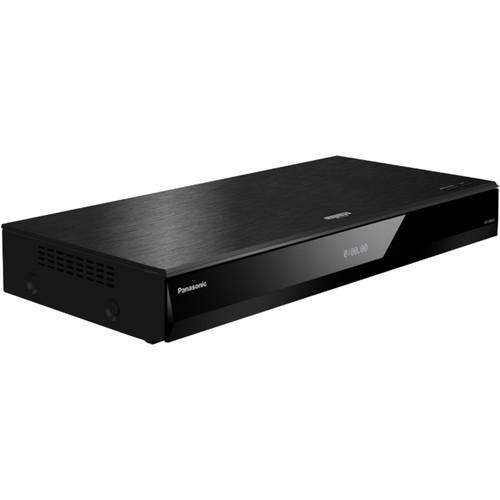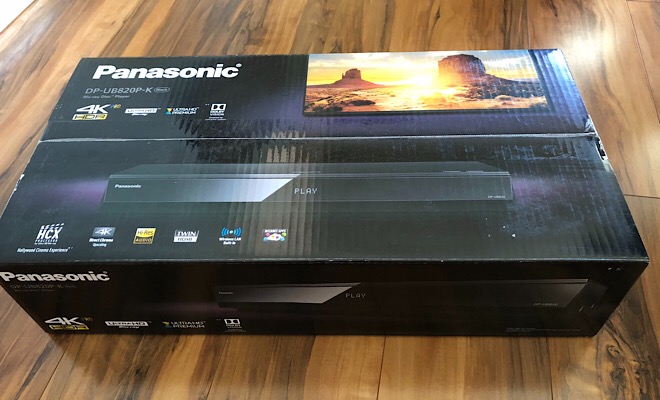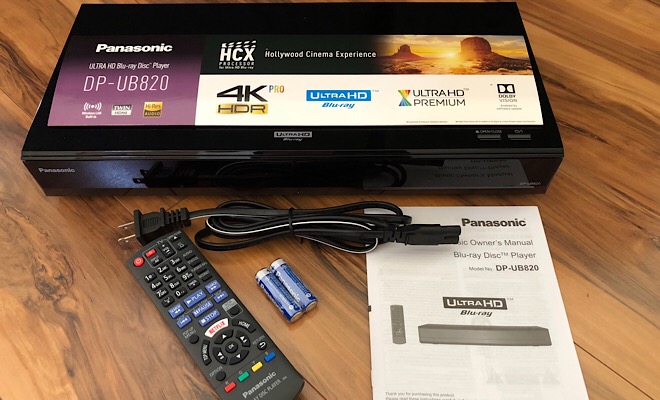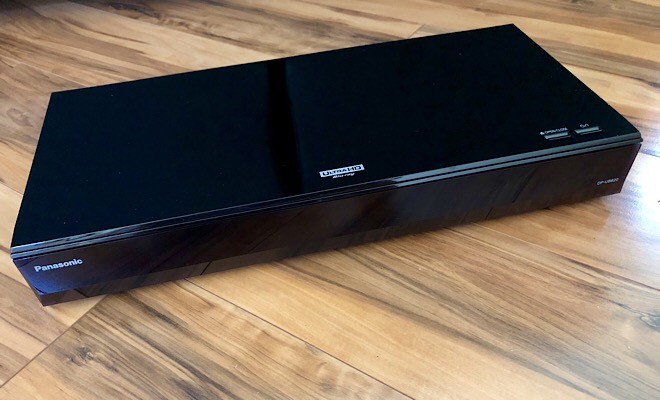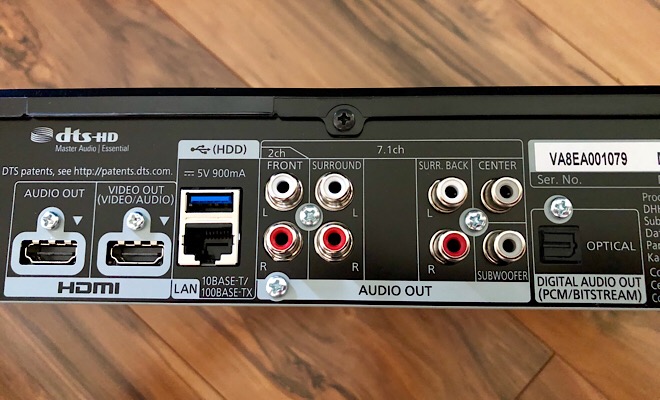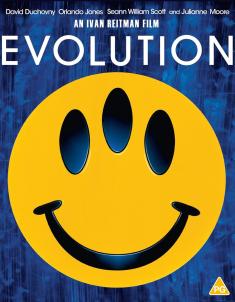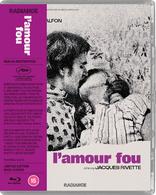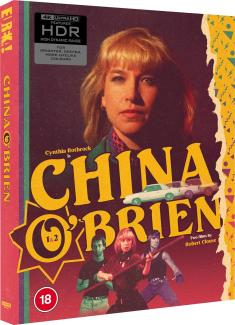The Next Oppo: Panasonic DP-UB820 4K Ultra HD Blu-ray Player
Overview -Overview - Panasonic picks up where Oppo left off, producing a high-quality 4K UHD Blu-ray player that’s poised to become the format’s new mid-priced standard bearer. Featuring stellar HCX processing, an HDR Optimizer that allows users to adjust HDR content to best suit their viewing environment, superior 4K Direct Chroma upscaling, a host of picture-tuning tools, top-notch HD 3D support, and excellent streaming capabilities, Panasonic’s DP-UB820 instantly becomes the clear choice for discriminating 4K and HD movie mavens. Oppo's demise left a void, but this impressive player more than fills it and comes Highly Recommended.
UPDATE 8/28/18 - A firmware update that brings Dolby Vision capability to the Panasonic DP-UB820 has recently been released. The update takes only a few minutes over a wireless network, and the Dolby Vision performance is excellent. The Fate of the Furious looked fantastic in its Dolby Vision glory, with deep, rich colors, crystal clarity, and fluid motion. The update also includes an app for Amazon Prime Video, which joins Netflix as the only streaming services currently supported by the player.
Intro
When Oppo shocked consumers a few months ago with its sudden announcement that it was ceasing production of its highly respected and, frankly, beloved Blu-ray players, many loyal customers like myself felt dismayed, betrayed, and saddened. I have been more than satisfied with my Oppo purchases over the years and still own three of the company's players (a BDP-93, a BDP-103, and a UDP-203), all of which continue to perform flawlessly. Believe it or not, I was getting set to purchase another UDP-203 just at the time Oppo broke the bad news. But instead of spurring me to snatch up one last player before their stock was depleted, the bombshell announcement gave me pause. Oppo claimed it would continue to support its existing products with periodic firmware updates as technology changes warranted, but I wondered how long that support would actually last, especially with the advent of HDR10+ on the horizon...and whether one day I might be left out in the proverbial cold.


To hedge my bet, I began to research other players that might be a viable substitute for the Oppo, and discovered the newly unveiled and not-yet-released Panasonic DP-UB820, which was touted as the first 4K capable Blu-ray player to offer support for HDR10, HDR10+, and Dolby Vision. That got me excited. I quickly emailed Oppo to ask if they would be issuing an HDR10+ firmware update for their existing UDP-203s (which already support HDR10 and Dolby Vision), and a rep responded that the company planned to provide the update, but it wouldn't occur until the fall at the earliest. Maybe Oppo wanted to see how HDR10+ developed before promising a firmware update, but their caginess made me skeptical. Even though the Panasonic UB820 wasn't scheduled to be released in the U.S. until July (and this was back in early May), I decided to forego the purchase of one of the last Oppo UDP-203s, despite my intense affection for the product, and roll the dice with the Panasonic UB820. I've been holding my breath ever since, hoping I didn't make a poor decision.
Fast forward three months and the much-anticipated UB820 has finally arrived. As promised, it supports HDR10 and HDR10+, and will support Dolby Vision through a firmware update in the fall. It also boasts an HDR Optimizer that allows you to manually adjust the brightness of HDR content depending on the light levels in the viewing room, an HCX (Hollywood Cinema Experience) processor that's designed to enhance Blu-ray picture quality, 4K Direct Chroma upscaling that converts 1080p content to 4K, support for high-resolution audio formats, and twin HDMI output jacks (one for video and one for audio). It also plays HD 3D discs, supports 4K streaming services, has built-in wireless LAN, and promises future connectivity with Amazon Alexa and Google Assistant through another upcoming firmware update.
On paper, it sounds pretty terrific. But does the Panasonic DP-UB820 live up to its hype? And does it pick up the ball that Oppo just dropped? Let's take a detailed look.
Specs & Design
Listing at $499, the UB820 is more expensive than the garden variety UltraHD Blu-ray player, but the features listed above justify the higher price tag. The unit is still cheaper than the Oppo 203 ever was, and it's more compact and lighter, too. The UB820 measures 17" wide x 8" deep x 2-1/2" high (the Oppo is 4 inches deeper, half-an-inch higher, and weighs a couple of pounds more) and is attractively styled. Yes, the top and front flap are made of plastic, but there's a faint grain in the glossy plastic on top that lends the player a sleek look, while a slight bevel across the front flap (which hides the disc tray, lighted display, and a USB port) adds some eye-catching style to the design. Compared to the Oppo, which features a sturdier build, the UB820 feels a bit flimsy, but once it's safely ensconced in my tech rack, I'll never think about its size or bulk again. As long as it performs as advertised (and isn't an eyesore), I'm good.
On the back of the unit, there's a video/audio HDMI out port and a dedicated audio out HDMI port, so you don't have to pass the video signal through your A/V receiver; you can connect it directly to your TV to preserve its integrity and quality. (That was a popular feature that I believe Oppo pioneered, so it's nice to see Panasonic following in their footsteps.) There are also Ethernet and USB ports, an optical out jack, and the capability for a 7.1 analog audio hookup. On the top of the UB820 is a power switch and a button that will open and close the disc tray.
Setup
The rectangular box contains the player, a power cord, remote with batteries, and a setup guide. (A full 48-page manual that describes all the features and operations in detail is available for download from Panasonic's website.) No HDMI cable is included; you'll have to get that yourself (and make sure it's labeled "premium" for optimal 4K transmission). I used the dual HDMI hook-up, connecting the video cable directly to my LG OLED 65E8P TV and the audio cable to my Denon X2300W A/V receiver. I turned on the unit, followed the on-screen prompts, connected the UB820 to my home wireless network, performed the obligatory firmware update, and was up and running in about 15 minutes.
The home screen has options for Video, Music, Home Network, Network Service, and Setup. The on-screen displays explain the various functions in the setup menus well enough, and I recommend carefully going through them before you play your first disc, just to make sure the settings suit your display, then tinker with them further a bit later, if desired. Netflix comes pre-loaded on the player (after the firmware update) and can be accessed through the Network Service area. No other streaming services or apps are pre-loaded, but there is an online market that offers a variety of downloadable apps. Though the pickings at this time are pretty slim, hopefully, more will be added as time goes on.
The remote is small, does not feature any backlighting, but provides plenty of accessibility. A dedicated Netflix button is convenient, as well as a button that takes you directly to the HDR Optimizer (more on that below). An Option button brings up more detailed adjustment screens for video and audio, and a Playback Info button calls up all the stats video geeks like to see, such as output resolution, frame rate, bit rate, method of HDR, and more. An Internet button takes you directly to the network homepage, and the remote can be configured to operate your TV as well.
HDR Optimizer & Other Picture Tuning Tools
One of the UB820's flagship features is the much ballyhooed HDR Optimizer, which enables the user to toggle between four HDR brightness settings - Standard, Natural Environment, Light Environment, and Bright Environment - on the fly to optimize HDR impact in both dark and light-filled viewing spaces. This is a very welcome feature, as HDR can sometimes appear muddy when certain discs are viewed on certain displays. Rather than spend a lot of time adjusting brightness and contrast levels, the HDR Optimizer allows you to sample various settings quickly and easily. The gradations are subtle yet noticeable. My viewing room isn't terribly bright, so the Standard and Natural settings work best for me, but if you tend to watch your discs during the day or with the lights on, the brighter settings will certainly come in handy.
Other picture adjustment tools include a Dynamic Range Adjustor, which allows the user to heighten or lessen the screen's intensity (much like the typical brightness adjustor - also on board - but with more marked impact) and both a white and black Tone Curve adjustor. Achieving the proper degree of detail in whites and blacks without blooming or crush can be difficult, but the Tone Curve tools pinpoint those areas and zero in on the subtleties that really make the image come alive. I bumped up my white tone curve a couple of notches to bring out the fine details in the massive snowscape scenes in Murder on the Orient Express, and really noticed a difference in clarity and texture. I also deepened the blacks slightly for better contrast and a richer appearance. Once you settle on comfortable levels, you might not play with these tools very often, but they're a tremendous asset to this player.
Performance
I sampled a variety of 4K Ultra HD Blu-rays, standard Blu-rays, 3D Blu-rays, and 4K Netflix streaming content on the UB820 for this review, and the player passed all the tests with flying colors. Discs loaded quickly, the remote is responsive, and the player display can be set to go completely black after a function is performed. There's not even a power light on this machine, so if you're a stickler for complete darkness during your movie-watching, the UB820 will make you very happy indeed.
Picture quality is, in a word, breathtaking. Colors are rich and vibrant, detail is exceptional, edges are crisp, and the processing is smooth. I watched portions of The Great Gatsby, Murder on the Orient Express, Léon, and The Fate of the Furious in 4K UHD and was blown away by the stunning images. The superb HCX (Hollywood Cinema Experience) processor maximized the lush hues and fine details of each film, while supplying impeccable black levels and brilliant whites. Facial pores, stray hairs, bits of fabric, filtered light, and minute background elements were all razor sharp, yet still exuded a natural, cinematic appearance. Motion was quite smooth, with only a slight bit of jitter in the fastest scenes.
As stated above, video adjustments were easy to make while watching the various movies (although the preset levels are so good, not much tinkering is necessary). While the more complex adjustment overlays take up a bit too much of the display's real estate, if you click on the individual component, the menu disappears and an adjustment slider bar pops up on the bottom of the screen so you can easily eyeball the alterations. Unfortunately, some adjustments, such as audio delay, cannot be made while the movie is playing; you must call up the home screen, go to setup, make the adjustment, then go back to the movie to see if the change is satisfactory. That's a bit of a pain. The UB820 does generally remember the stopping point on the disc (but not always), so you can pick up where you left off, but the disc does still need to load again and display the initial studio logo before you can resume viewing. The good news, though, is that many of these settings, once they're locked into your satisfaction, shouldn't have to be accessed again...and the ones you might use often can be more conveniently recalled.
The Direct Chroma 4K upscaling is as good or better than the scaling on the Oppo 203, turning regular Blu-rays into 4K pieces of eye candy. I popped in the standard Blu-ray of Mad Max Fury Road and couldn't believe what I saw. The image was so bold, detailed, and life-like, I truly thought I was watching the film in authentic 4K. The same was true of Gravity and Gladiator. To get a taste of how the UB820 handles animation, I watched a portion of Disney's Big Hero 6 on Blu-ray and was pleasantly surprised by the crispness of the rendering and gorgeous color palette. Classic movies played equally well. Hitchcock's North by Northwest looked absolutely yummy upscaled to 4K, while the black-and-white photography of Casablanca sported exceptional contrast and clarity. Even older films with heavier grain like Hitchcock's The 39 Steps, as well as ones that weren't as meticulously preserved, such as the low-budget 1950s film noir 99 River Street, looked terrific. The video adjustment settings for Blu-ray are slightly different than those for 4K UHD, offering six different "picture types" - Normal, Cinema, Fine Cinema, Retro Cinema, Animation, and Live. Brightness and contrast are different for each setting, but the gradations are slight. "Normal" may sound boring, but it certainly does the job, so you might just want to keep it anchored there. For some reason, the UB820 was unable to play my Life of Pi Blu-ray (the loading went on for quite some time without ever reaching the menu screen; interestingly, the disc plays fine on the Oppo UDP-203), but that was the only disc I had trouble with.
I had no trouble at all with streaming Netflix through the UB820. The app popped up quickly and posted fast response times. Streaming of 4K content was smooth, error-free, and featured the same stunning clarity, bold colors, and fine detail renderings as the disc-based content. (One small nitpick: the display screen on the UB820 does not turn off during streaming playback. The word “Net” remains on the display throughout usage.) I also hooked up the UB820 to my LG OLED 65E6P TV to test out its 3D capabilities, and it impressed me there as well. The Life of Pi 3D disc loaded like a charm (and performed perfectly), while my go-to 3D flick, Martin Scorsese’s Hugo, looked every bit as good as it does on my Oppo 203. I even sampled a few minutes of a 1950s 3D film, Inferno, and the processing seemed a bit smoother on the UB820 with less visible grain.
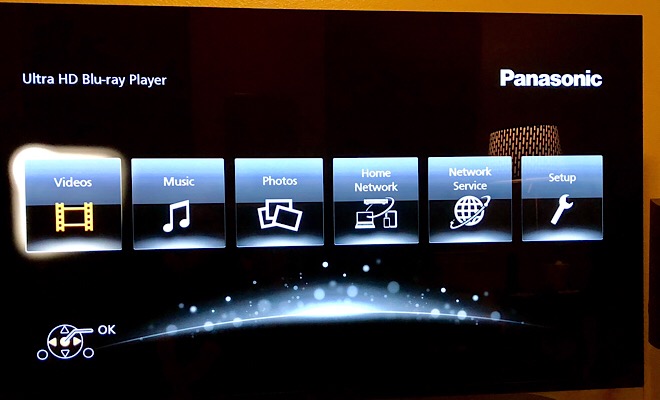
Final Thoughts
- Superior 4K processing
- Direct Chroma 4K upscaling
- Network streaming
- HDR Optimizer
- Easy to use
- Lack of Apps
- No Dolby Vision out of the box (A Fall firmware update has been promised)
- Audio sync adjustments can't be made while watching discs
Don’t shed any more tears over the demise of Oppo. The Panasonic DP-UB820 4K Ultra HD Blu-ray Player steps up to the plate and hits a home run on its first at-bat. With fantastic 4K processing, terrific upscaling, seamless Netflix streaming, razor-sharp 3D playback, and a couple of handy tools to optimize and customize HDR to your personal viewing environment, this high-quality 4K UHD Blu-ray player instantly rises to the top of its field. Once it gets its Dolby Vision firmware update this fall, the UB820 will be the standard bearer for all future 4K UHD machines. And at a list price of $499, it’s cheaper now than the Oppo UDP-203 ever was. Is it perfect? No home video component ever is. But it’s close enough to make me glad I waited for it. Forget spending upwards of a grand for an Oppo 203 on eBay. Get the Panasonic UB-820 instead. You won’t be disappointed. On the contrary, I bet you’ll be thrilled. Highly Recommended.
Where To Buy
The Panasonic DP-UB820 4K Ultra HD Blu-ray Player is currently available for pre-order and set to ship August 26, 2018 via retailers like Best Buy and B&H Photo-Video. If you can't wait, reach out to Robert Zohn & Team at Value Electronics in Scarsdale, NY. Per my understanding, they're planning to ship another set of orders on or around August 16, and offer free shipping here in the US.
